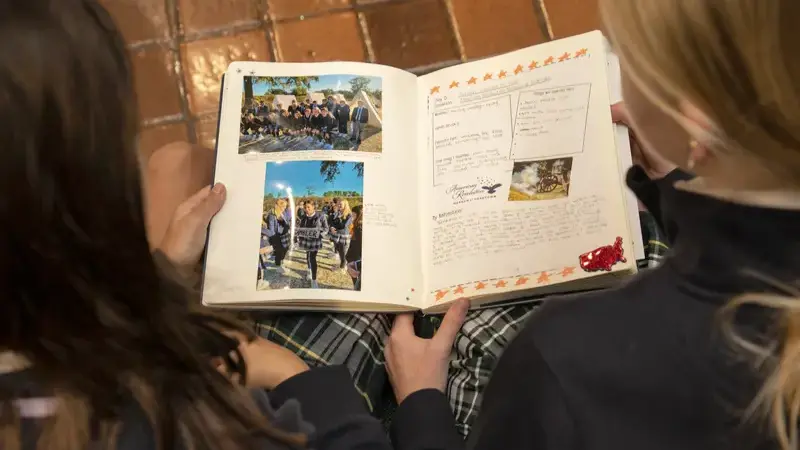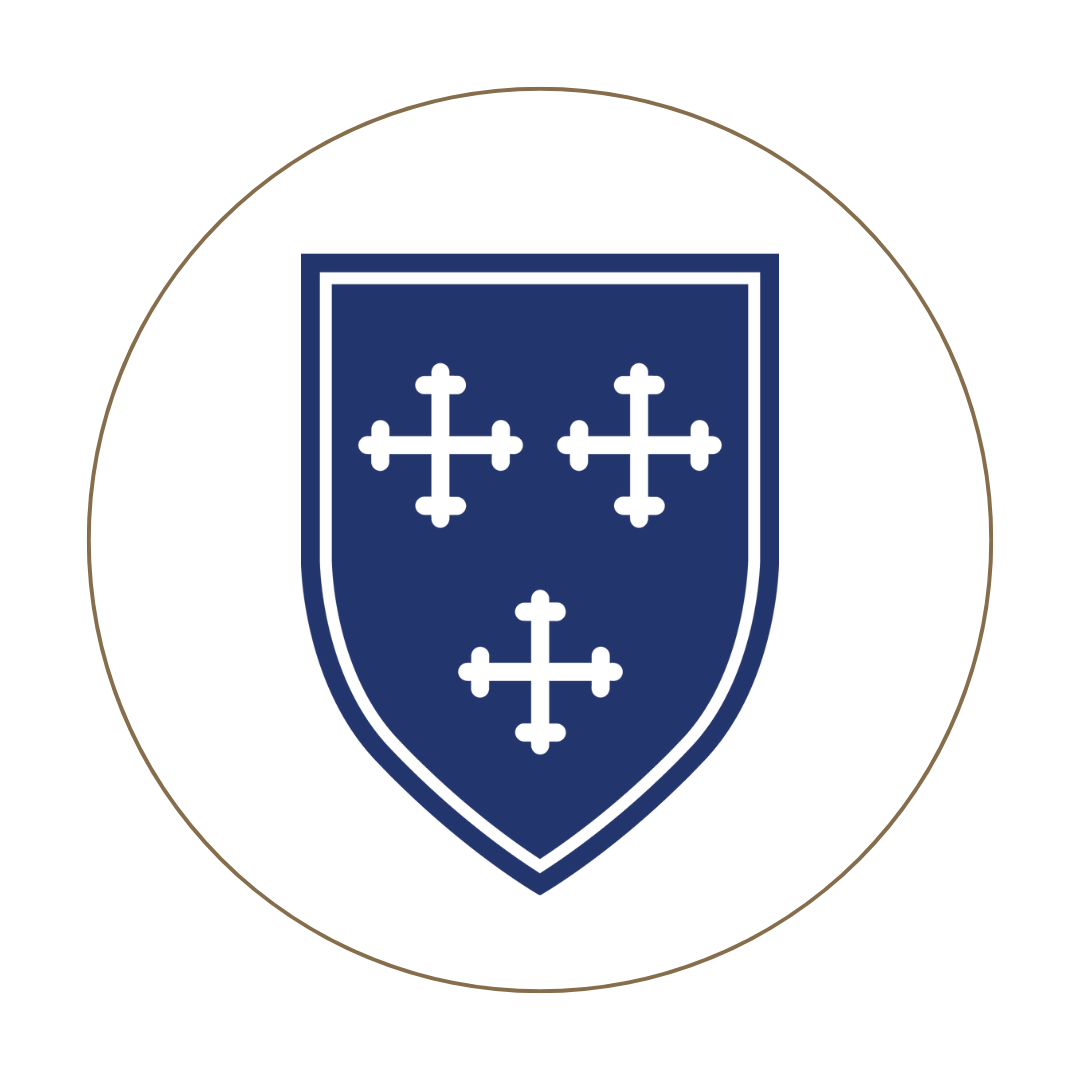Sixth Graders Explore Washington, D.C., on Annual Class Trip
May 21, 2024
Students and their chaperones departed early Sunday morning for the annual sixth-grade trip to Washington, D.C., where every day was filled with exciting activities and educational opportunities. The fun started daily at 6:30 a.m. and lasted until 9:00 p.m., ensuring the Class of 2030 didn’t miss a single beat during such an unforgettable trip.
The first day’s itinerary included visiting Mount Vernon and the Lincoln, Korean War, and Vietnam War Memorials before heading back to the hotel for some respite. On the second day, students saw the Martin Luther King and Franklin Delano Roosevelt memorials, toured the Capitol building, visited the Museum of African American History and Culture, then topped off the day with the WWII and Jefferson Memorials. The third day was particularly special due to a newer excursion on the annual itinerary: the Steven F. Udvar-Hazy Center, a Smithsonian National Air and Space Museum annex. While there, students saw numerous aircraft, including the Bell 206L-1 LongRanger II “Spirit of Texas” helicopter, in which long-time ESD friend, benefactor, and alumni parent H. Ross Perot Jr. completed the first around-the-world flight by helicopter in 1982. Mr. Perot also landed the Spirit of Texas in front of All Saints Chapel on this very campus before it became a museum artifact.
Shortly thereafter, the group went to Arlington National Cemetery, where they witnessed the changing of the guard and participated in the highly revered wreath-laying ceremony at the Tomb of the Unknown Soldier. Every year, four ESD representatives participate in the ceremony using a unique ESD wreath. This year, in addition to the three chosen students, ESD legacy Eddie Eason was granted the opportunity to take part in the sacred observance for the first time after several years of witnessing students assume the honor.
“He's gone on the trip for so many years, and it’s just a special way to remember him on his last trip. It was a great honor for him to get to do that because he's gone and seen so many kids year after year getting to do it,” Assistant Head of Middle School Allison Darnell noted.
Not only does the sixth-grade class travel to D.C., but they also stop in Virginia to visit colonial towns such as Williamsburg, Jamestown, and Yorktown. The last three days of the trip were spent exploring colonial settlements, visiting the American Revolution Museum, and learning about antiquated practices, such as how to load and fire a musket, what medical attention looked like in the 1700s, and how people cooked during that time. Students also participated in new activities relating to the 16th century, which included learning several types of colonial dances from the 1700s and taking part in a military training simulation known as “In Defense of Liberty” programming.
Before and after the trip, students engage with academic literature, historical research, and projects that prepare them for the journey and help them process what they learned in a meaningful way. Numerous classroom activities precede the trip, such as researching a person’s name and story to later locate on the Maya Lin Vietnam Memorial, creating informative presentations about iconic scenery in D.C., and delving into book assignments that pertain to lived experiences in the historic United States.
“We have studied a lot of the material that they will get to see in person or material related to the places that we will see, not necessarily just D.C. but also Jamestown and Colonial Williamsburg. That ties in with our Early Colonial America [unit], which we spend the first quarter learning about. Then the next quarter, we do government, which lays out the three branches, and then we get to see all the buildings, so it ties directly to the curriculum we’re studying,” sixth-grade U.S. History instructor Jana Barger explained.
| Read More |
|---|
|
At their core, class trips coalesce academic and experiential learning for a well-rounded education that informs the student’s mind, values, character, and being. From day one, students began making connections between what they learned in the classroom and what they were actively experiencing. For instance, while visiting The National Museum of African American History and Culture, students referenced the book Chains by Laurie Halse Anderson. “Even though it’s essentially a history trip, students were making tons of connections between the book they read in English and the American Revolution. They’d say, ‘Oh, that’s like what happened in Chains.’ I started to see during D.C. how they’re picking up on those connections,” Barger said. “It made them come back and have questions about things that we didn’t talk about as much in class or maybe topics that we don’t even get to, but seeing things in D.C. sparked their curiosity.” Additionally, while visiting the Capitol, students got to see Congresswoman Beth Van Duyne for the second time this year, and our students made sure to take advantage of it by coming prepared with questions like, “What made you choose this career path?” and “What issues are you passionate about?” One student even inquired about an email he had previously sent her regarding Dallas infrastructure since he had not yet received a response. Congresswoman Van Duyne politely directed the astute young gentleman to his local representatives for more information. Perhaps the most creative aspect of the trip happens after the fact when students start filling out their journals. Throughout their time in D.C. and Virginia, students collect and save memorabilia, including brochures, tickets, boarding passes, photos, stickers, matchbox covers, hotel keys, and more, to then put in a school-provided journal. Ms. Barger also supplies template pages for each place the group visited, where students record their favorite memories and learning experiences and write a reflection, which counts as their final grade for history and English. “It is a scrapbook, but they tell stories. Each place we go, they talk about their favorites, what they saw and did, and then [they do] their reflection. To me, this is one of the biggest connections with the trip in terms of the summary of what we’ve accomplished,” Barger explained. Although the journals count as a significant grade in two classes, students take ownership of the project and often keep it for years. Similarly, students reminisce about the trip through pictures and shared experiences well beyond sixth grade. “I was just talking with some juniors the other day, and they were looking through their shared album of D.C. pictures just for fun!” Darnell joyously exclaimed. As demonstrated by the sixth-grade trip, ESD takes pride in fostering a community that feels like family. Through numerous bonding experiences, such as class trips, outdoor excursions, and team-building activities, students cultivate relationships and forge connections that last a lifetime. “It definitely helps them build community, strengthen their friendships, and the majority come back feeling so much more confident and loving the experience,” Darnell reflected. “It’s another opportunity to get to know more of your classmates and have these shared experiences together on your D.C. trip. It’s being with them outside of school that creates those long-lasting memories.” |






